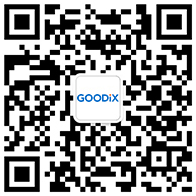Basics
Cryptosystem
-
Symmetric cryptosystem: also known as private-key encryption/decryption, in which the same key is used to cipher (by the sender) and decipher (by the receiver) data
-
Public-key cryptosystem: also known as asymmetric encryption/decryption. It uses a pair of keys: a public key and a private key, with each used for encryption/decryption. For example, if the public key is used to encrypt a message, the private key will be used to decrypt the message.
-
Hybrid cryptosystem: It combines the efficiency of a symmetric cryptosystem with the convenience of a public-key cryptosystem. Symmetric cryptosystem boosts the efficiency of encryption and decryption, and public-key cryptosystem helps distribute keys.
Message Authentication
-
Digital digest: Turns messages at different lengths into short messages at a certain length, often used with one-way hash function.
-
Message authentication code (MAC): a message authentication mechanism which not only examines whether a message is tampered with, but also checks whether a message comes from an expected communication object
Digital Signature
Digital signature: The strings, which can only be generated by the message sender and cannot be fabricated by other parties, can be used as valid credentials for the authenticity of a sent message. Compared with MAC, digital signature stands out for its non-repudiation.

